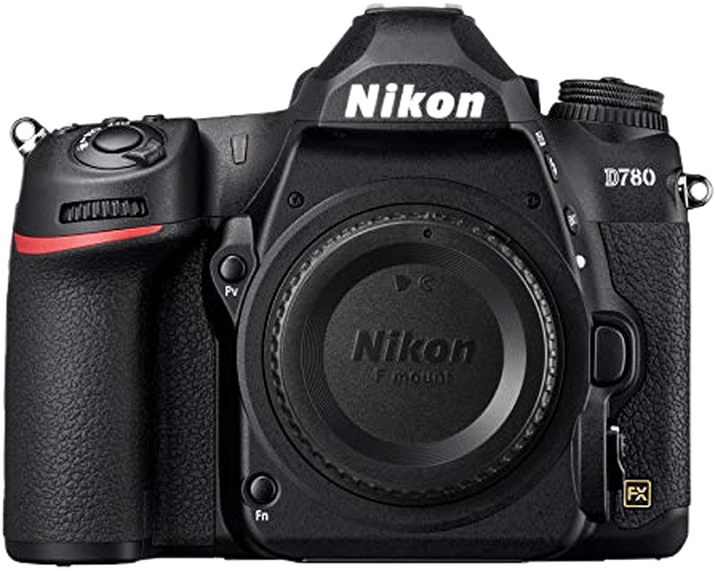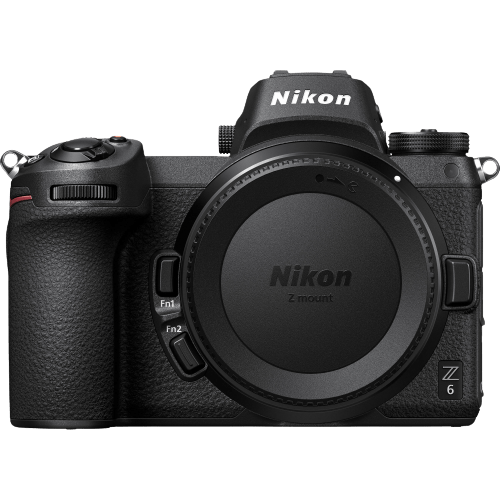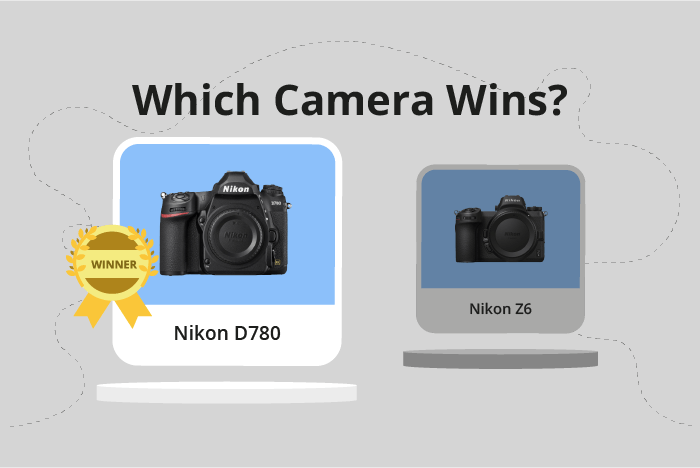Nikon D780 vs Z6 Comparison
Nikon D780

Nikon Z6

The Nikon D780 and Nikon Z6 both have a score of 81/100, making them equally impressive cameras. They share a common release year of 2018 and have similar specifications, such as camera size and weight. The D780, a DSLR camera, has a size of 144 x 116 x 76mm and weighs 850g, while the Z6, a mirrorless camera, measures 134 x 101 x 68mm and weighs 675g.
The D780 outshines the Z6 with its launch price of $2299, as it offers more value for the money. On the other hand, the Z6 has a lower launch price of $2000, making it more affordable for budget-conscious photographers.
Both cameras excel in their respective categories, with the D780 providing better value and the Z6 being more budget-friendly. The choice between the two ultimately depends on the photographer’s preferences and needs.
Nikon D780 vs Z6 Overview and Optics
The Nikon Z6 outperforms the Nikon D780 in optics with a score of 83/100 compared to the D780’s 77/100. Both cameras share several specifications, including a 12 FPS shooting speed, a CMOS sensor, an Expeed 6 processor, a full-frame sensor size, and a DXOMARK sensor score that is quite close (95 for the Z6 and 97 for the D780).
The Nikon Z6 takes the lead in optics due to its image stabilization feature, which the D780 lacks. Image stabilization helps to reduce blur in photos, particularly when shooting in low-light conditions or using slower shutter speeds. The Z6 also has the advantage of the Nikon Z lens mount, which provides better compatibility with the new Z-mount lenses, designed specifically for mirrorless cameras.
On the other hand, the Nikon D780 does have a slightly higher megapixel count at 25 compared to the Z6’s 24.5. This difference, however, is minimal and may not be noticeable in most real-world situations. The D780 also has the Nikon F lens mount, which is compatible with a wide range of Nikon lenses, albeit without the benefits of the newer Z-mount lenses.
Both cameras have their strengths in optics. The Nikon Z6 is superior due to its image stabilization and compatibility with the new Z-mount lenses, which can enhance image quality and user experience. The Nikon D780, while slightly lacking in these areas, still offers a high-quality optical performance with its higher megapixel count and compatibility with a vast collection of Nikon F lenses. Ultimately, the choice between the two cameras depends on the user’s specific needs and preferences.
Nikon D780 vs Z6 Video Performance
The Nikon D780 outperforms the Nikon Z6 in video capabilities, scoring 91/100 compared to 83/100. Both cameras share some common specifications, such as 4K maximum video resolution and maximum video dimensions of 3840 x 2160. Additionally, both cameras have built-in time-lapse functionality.
The Nikon D780’s higher score is due to its superior maximum video frame rate of 120fps, while the Nikon Z6 only offers 60fps. This means the D780 can capture smoother slow-motion footage, which is particularly useful for filming action scenes or sports events. The D780’s higher frame rate allows for more flexibility and creativity in post-production, giving users the ability to slow down footage without losing quality.
On the other hand, the Nikon Z6 still provides solid video capabilities with its 4K resolution and 60fps maximum frame rate. Although it may not be as versatile as the D780 in terms of slow-motion capture, it is still capable of producing high-quality footage suitable for most videography needs.
Comparing the video capabilities of the Nikon D780 and Nikon Z6, it is evident that the D780 offers superior slow-motion capture due to its higher maximum video frame rate. However, the Z6 remains a competent option for those who do not require the advanced slow-motion capabilities provided by the D780. Both cameras provide 4K resolution, large video dimensions, and built-in time-lapse functionality, making them suitable choices for a variety of videography projects.
Nikon D780 vs Z6 Features and Benefits
The Nikon D780 and Nikon Z6 both receive a feature score of 87/100, indicating that these cameras share many similar specifications. Both cameras have a screen size of 3.2 inches, touchscreen capabilities, and are equipped with WIFI and Bluetooth. Despite their similarities, each camera has distinct advantages over the other.
The Nikon D780 edges out the Z6 with a higher screen resolution of 2,359,000 dots compared to the Z6’s 2,100,000 dots. This difference allows for a clearer and more detailed display on the D780. Additionally, the D780 has a flip screen, which the Z6 lacks. The flip screen is beneficial for capturing images and videos from various angles, providing more versatility for photographers.
On the other hand, the Nikon Z6 has some advantages over the D780. Although the Z6 has a lower screen resolution, it still provides a high-quality display that is sufficient for most photography needs. Furthermore, both cameras lack GPS functionality, which may not be a significant drawback for many users.
Based on these comparisons, the Nikon D780 has a slight advantage over the Z6 due to its higher screen resolution and the presence of a flip screen. However, the Nikon Z6 remains a strong contender as it shares many of the same features as the D780, including screen size, touchscreen, WIFI, and Bluetooth capabilities. The choice between these two cameras ultimately depends on the individual photographer’s priorities and preferences.
Nikon D780 vs Z6 Storage and Battery
The Nikon D780 triumphs over the Nikon Z6 in storage and battery with a score of 97/100 compared to the Z6’s 35/100. Both cameras share similarities, such as accepting the same battery type (EN-EL15b) and providing USB charging capabilities.
However, the D780 outperforms the Z6 in terms of battery life and storage capacity. With 2260 shots per charge, the D780 offers significantly more battery life than the Z6’s 310 shots. Additionally, the D780 has two memory card slots that accept SD, SDHC, and SDXC cards (UHS-II compatible), whereas the Z6 only has one slot for XQD cards.
The Z6 does not have any apparent advantages in storage and battery compared to the D780. Consequently, the Nikon D780 emerges as the superior choice for photographers seeking longer battery life and more flexible storage options. The Nikon Z6 falls short in these aspects, making it less suitable for extended shooting sessions or situations requiring ample storage space.
Alternatives to the Nikon D780 and Z6
Are you still undecided about which camera is right for you? Have a look at these popular comparisons that feature the Nikon D780 or the Nikon Z6:

